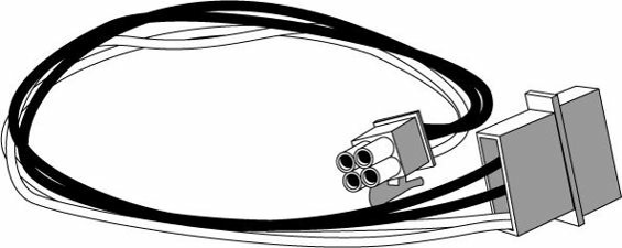Hardware Reference
In-Depth Information
would hesitate to use one of these adapters on any processor rated at more than 75 watts. An example
of a peripheral to +12V adapter is shown in
Figure 18.26
.
Figure 18.26. Peripheral to +12V power adapter.
Eight-Pin +12V CPU Power Connector
High-end motherboards often use multiple voltage regulators to supply power to the processor. To
distribute the load among the additional voltage regulators, these boards may use two 4-pin +12V
18.27
). This type of CPU power connector was first defined in the EPS12V power supply
specification version 1.6 released in the year 2000. Although this specification is intended for file
servers, the increased power requirements of some high-power PC processors have caused this
connector to appear on desktop PC motherboards supporting these processors.
Figure 18.27. Eight-pin +12V CPU power connector, side and terminal end view.
The pinout of the 8-pin +12V CPU power connector is shown in
Table 18.16
.
Table 18.16. Eight-Pin +12V CPU Power Connector Pinout (Wire End View)
Some motherboards that utilize an 8-pin +12V CPU power connector must have signals connected to
all 8 pins for the voltage regulators to function properly, while most will work properly even if a 4-
pin PSU connector is attached. In the latter case, you will often see that the 8-pin connector has a cap
installed over 4 of the pins, meaning that a 4-pin connector can be installed in the exposed portion.







